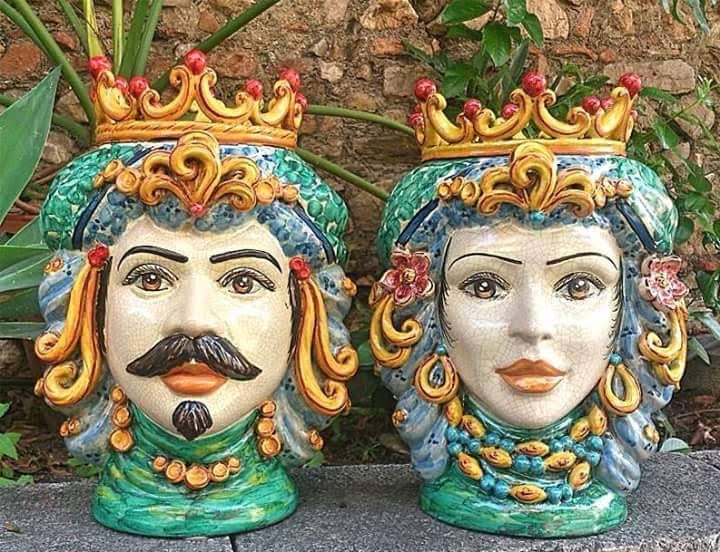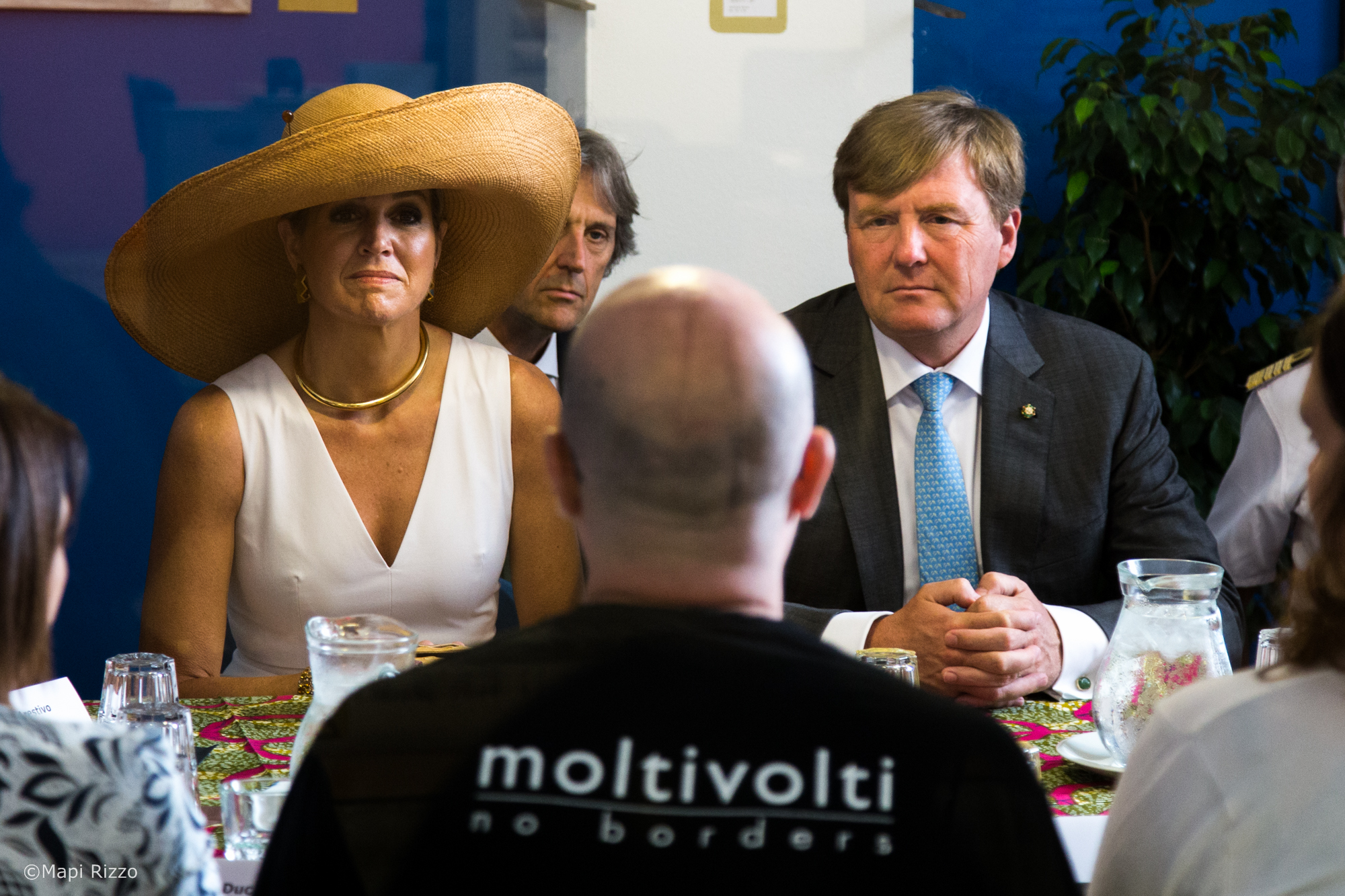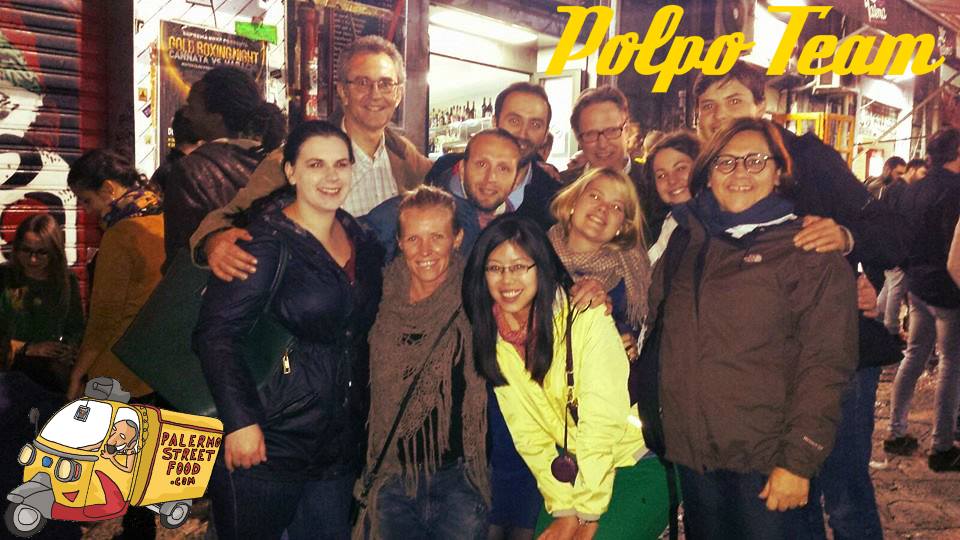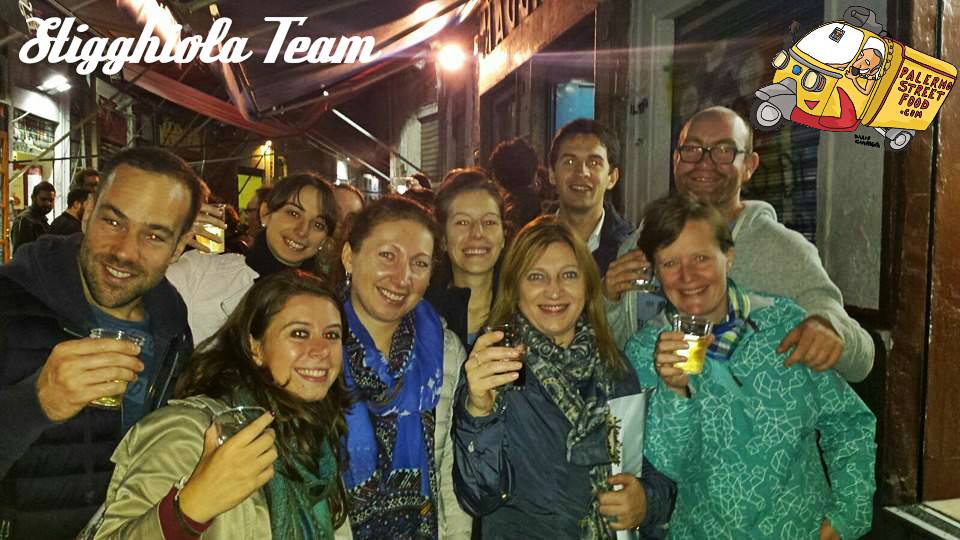It's the most wonderful time of the year.
Green Sicilian gold. This is the best place to hang out in early November in Sicily, at the olive mill.

It's the most wonderful time of the year.
Green Sicilian gold. This is the best place to hang out in early November in Sicily, at the olive mill.
Sicily is an island full of history, traditions, and legends.
During its long lasting life, Sicily has had so many different dominations. These dominations have influneced everything in Sicily from our food, to our culture, to our language.
In this article we are going to tell you about one of the most enchating symbols of the Sicilian ceramic art tradition: La Testa di Moro.
There are two legends about this topic and both involve two lovers, a Moro (Moro means Arabian man) and a Sicilian woman.

The first legend tells us about a love affair between an aristocratic beautiful Sicilian woman and a beautiful Arabian man. They had a clandestine love for many years.
Then one day, the woman's family found out their secret. The family felt a huge shame for their love. The woman's family decided that the only way to save their family honor was to kill both and expose their heads on their balcony. After they did so and some time passed, the heads started to deteriorate. The family then had 2 ceramic vases custom made depicting the tragic couple's faces, so that their heads could be on display forever.

Here's the second legend. This legend says that around the 1000 ac, when the island was dominated by the Arabians, a young beautiful Arabian man developed a crush on a young beautiful Sicilian woman who lived in one of the buildings in "Al Hàlisah," a neighborhood known today in Palermo as La Kalsa (where we go on our Palermo Street Food tours!)
The man tried so hard to make eye contact with his crush; he was hoping to have a chance to speak with her. Finally the woman noticed him too and the man had his opportunity to declare his true love for her. The woman immediately fell in love with his intensity and passion.
Shortly after, the man confessed to her the truth about this life, that he was actually already married and he had to go back to his family (smh). The woman felt so sad about the idea of losing her love forever. She also felt betraid and that her pride had been dishonored.
So, she decided to kill the man and cut his head off. She put his head on her balcony with all her other plant vases. She planted a basil plant (from Basilikos, the king plant) inside the head and she watered the plant for the rest of her life with her tears.

Since then the head-planter trend took off. Sicilians still think that planters shaped like heads are a very nice way to decorate their balconies.
Both legends have some similarities and explain why also today we see these planters. We do not know which is the true legend, but we do know that these stories were very important and have survived after almost 1000 years.
Today you can find the Testa di Moro symbol all around Sicily. But the most important village for the creation of these pieces of art is Caltagirone, a city famous for their great ceramic tradition. The main steps in the village of Caltagirone are decorated with ceramic that reproduce the story of our different dominations. Every 14 steps the style changes according to the different dominations: Phoenicians, Greeks, Romans, Normans etc.


Do you know the shape of Palermo? Today it is kind of like a scraggly half moon that hugs the coast of the Tyrrhenian Sea. But That is not how it has always been.
It all started in the 700 AD when the Phoenicians decided to build a small settlement in the area we now know as Palermo. They chose this area probably because they wanted to take advantage of the surrounding mountains which provided a natural system of defense.
Fast forward to the the Kalbids, an Arab Muslim people that ruled Sicily from 948ish to 1053ish and used Balàrmuh (aka Palermo) as an important economic hub in the Mediterranean. Actually, legend has it that it was the Kalbid people who brought LEMONS to Sicily! Ok, sorry, we digress... gahh, not everything has to ALWAYS be about food... just, most of the time!
Anyway, back to Palermo's urban history. The Kalbids had the city set up as a rectangle. The main street in this rectangle went from the port to the palace. This street was called Il Cassaro, which is today's Corso Vittorio Emanuele; although, most locals know what you mean if you say "Il Cassaro," even today.
Il Cassaro meets Via Maqueda where, in the 1600s, the famous Quatro Canti were constructed. This is one of the most famous cross roads in the world. Actually, Palermo's historic city center is the largest city center in Europe. And that is precisely where we suggest that most people stay when they visit our city. Our favorite site for finding an apartment to stay in, in Palermo, is on the website of our friends at Likibu because they compare all of the popular apartment rental sites (here's the link).
Oh, and, here's another fun fact, Il Parco della Favorita, is the largest urban park in Italy. You can even see it on this map above. Don't you love it? It was designed for us by our friends at Modern Art Map. They have a mission to create art using imagery, colors, and maps to capture the essence of a city. Of course for Palermo they choose a passionate red! Here's the link to their site.
We are totally enamored with Domenico Dolce and Stefano Gabbana right now.
You know that dishonest thing brands do? When they represent a place or a culture but they do it wrong or so inappropriately it is offensive? THIS IS NOT THAT. This is amazing and we want to thank Domenico and Stefano for giving Palermo, Monreale, and SIcily in general the honor they deserve.
Did you know that Domenico Dolce is from Polizzi Generosa in the province of Palermo? In the late 1970s, Dolce and Gabbana, the most famous fashion duo started in Palermo before moving to Milano.

Stefano Gabbana on the left and Domenico Dolce on the right
And in fact, for the past 5 days, Palermo and Monreale have been the international showroom of their new collection. And in the past days, both Domenico and Stefano expressed their extreme admiration for Palermo and the hilltop city of Monreale.
In the past few days, they have created so many beautiful things celebrating our city. They created a pop-up boutique and pop-up Martini Vermouth bar inside Tonnara Florio which is in Palermo's tiny neighborhood Arenella.
They also inaugurated a new cocktail called Ciuri Ciuri, paying homage to the iconic Sicilian folk song. This is the recipe for the Ciuri Ciuri cocktail:
1 part Martini White Vermouth
1 part vodka
1 hint of Spuma Bionda di Sicilia
1 organg slice

Hanging out in Tonnaro Florio drinking the Ciuri Ciuri cocktail.
Other events include, a fashion show in Piazza Pretoria, known colloquially to Palermitan locals as La Piazza della Vergogna. They actually put on a full high fashion show around the piazza's fountain. Another event was a re-enactment of the ballroom scene from Il Gattopardo (The film the Leopard) in Piazza Croce dei Vespri. Also there were other pop-up showrooms in Palazzo Gangi.

Fashion show in Piazza Pretoria
Domenico and Stefano are in love with the Arab/Norman period and if you take a look at their latest fashion collection, you can see these periods represent in their clothing.

King Willem Alexander and Queen Máxima came to visit Palermo on June 21, 2017. They were pleasantly surprised by Palermo's multicultural and diverse environment. They expressed their support for the city of Palermo in its efforts, helping immigrants and refugees who have escaped unlivable situations in other countries. The King and Queen visited Palazzo delle Aquile, I Quatro Canti, La Cattedrale, and the Palazzo dei Normanni.

The Queen and King of Holland with Mayor Leoluca Orlando of Palermo.
During their visit, they didn't miss Capo Market and obviously they ate some of our city's street food! In particular, they went crazy for le polpettine di pesce spada (small swordfish "meat" balls).

The King of Holland eating some street food in Capo Market in Palermo.
The Queen and King also found a moment during their visit to stop by Moltivolti, a co-working space in Ballarò. The were totally interested in their project and spent time with Claudio Arestivo, the co-founder of Moltivolti, talking to him about the challenges of his project.

Go get this book.
It's called Sicily: Recipes from an Italian Island by Katie and Giancarlo Caldesi and it is gorgeous.
Katie and Giancarlo are from the UK and we had the extreme pleasure of hanging out with them while they were researching their book.
They are amazing people. What a privilege to have helped them with their book.

This is our acknowledgement in the book. Not gonna lie, we are pretty proud to be the first listed as "Things to do in Palermo."

This is Chef Marco Piraino. MARCO sei troppo bello in questo foto!! We introduced Katie and Giancarlo to Marco. He's an amazing chef. Just look at that arancina!

Where to buy the book? If you are in NYC go pick up your copy at Archestratus in Brooklyn; it's a destination for anyone who loves Sicily. Just go there. You will thank us. If you are in London, go get yourself a copy at Books for Cooks.
You can tell by Salvatore's black lips that we are not joking around. We ate this octopus head and it was AHMMMazing. Just another friday night in Palermo!
A post shared by Palermo Street Food (@palermostreetfood) on

We know what you're thinking, it's about time!! Yes! Ladies and Gents, The Palermo Street Food Sicilian Wine Tasting!
It's no secret that the wine drinking portion of our Palermo Street Food Tours is one of the best parts of the tour. So, now, we bring you a full activity in Palermo dedicated 100% to wine. Evviva!
We are working with our lovely sommelier friend, and member of the Palermo Street Food team, Francesca. She is heading up all the tasting. Francesca is a great somm, crazy about Perricone, and a Palermo native. She knows everything there is to know about Sicilian wines!
You can read more about our Sicilian Wine Tastings held in Palermo, Sicily here. And if you have any questions, just email our wine team vino@palermostreetfood.com.
Cheers!
This was one of the first pictures that we ever posted on Instagram. He is the magnificent Il Signore Paolo and he will remain forever a symbol of Capo Market in the heart of Palermo. He will remain forever a symbol of Sicilianità and tradition.
Il Signore Paolo was the kind of person that you noticed. Even on the market's most crowded days, Il Signore Paolo would always catch your eye behind his counter of salted anchovies, sardines, and capers.
We know that many of our fellow Palermitani agree with us when we say that Il Signore Paolo was greatly admired and considered a great testament to our community's history and culture. Maybe it was his charisma. Maybe it was his passion, he loved what he did. Maybe it was because there's just nothing like a good anchovy packed in salt.
When you'd buy anchovies from Il Signore Paolo, he'd wrap them for you in newspaper. We loved that. His place in the market was in front of the church, the Immacolata Concezione al Capo. It was a really powerful position. The juxtaposition of the church, with it's exaggerated ornate baroque style, and Il Signore Paolo right out front, with his simple wooden counter... If you were lucky enough to have ever visited the church and then eat and anchovy from Il Signore Paolo, you know what we mean when we say that it was very special and beautiful.
Something we will always remember about Il Signore Paolo is that he loved to share his culture. He loved to let people from all over taste and he was always welcoming. There are so many good things to be said about this man.
Signor Paolo, grazie di tutto.

Cardoons, battered and fried. This is how we do it this time of year in Palermo. Cardoni alla pastella!

It's a magical time to be in Palermo.
Buon Natale a tutti.

It is said that the very first dessert to resemble a cannolo was in Ancient Rome, around the time of Cicero. But, it was during Medieval times that what we think of today as a cannolo really came to life; invented in Sicily by Arab women!
As the story goes, the city of Qal at al-Nissa (or as it is called today, Caltanissetta), was home to many Saracen harems. The women of these harems were known to prepare sweets and desserts, they were the first to make a sweet similar to what we now call cannolo. Legend has it that the cannolo's phallic form was totally intentional! It was chosen to represent the the penis of the women's husbands. What a bunch of bad-ass medieval bakers, with a serious sense of humor!
Later in history, when Sicily was conquered by the Normans and was thereby under Catholic rule, many women who previously lived in harems, became nuns. The cannolo tradition continued in the nunneries.
Of course, any mention of a phallus was completely done away with. Instead, the cannolo was said to represent a fountain of life water, the ricotta was said to be water. Less explicit, but still a symbol of fertility!
Cannoli, famous in all the world. They are a dessert. A a pastry. But did you know that cannoli are distinctly Sicilian? A dessert tradition born on the Island of Sicily. Many people do not realize that the cannolo is Sicilian, with origins deep in Sicily's history.
But let's think about the modern day cannolo. What makes a Sicilian cannolo, today, different from the cannoli found in other cities in the world?

The ricotta cheese must be made from sheep's milk. Never cow. Usually, with mini chocolate chips mixed in.
The shell is made with flour, wine, sugar, and fried in animal lard. Sorry vegetarians! Although, many of our friends in Palermo do prefer to use oil.
Canding fruit is a Sicilian art form. There is nothing better than real candied fruit. In Palermo you usually find a delicious slice of orange peel.
The pasta dish called "pasta 'ncaciata" is a typical Sicilian dish that is originally from Messina. This amazing dish is named after the way it is cooked: 'ncaciata style, aka, in burning embers.

So how do you make this pasta dish? First you boil pasta to the point that it is more than al dente. Then, you mix the pasta with just a bit of the following ingredients: ground meat, salame, hard boiled eggs, fried eggplant, fresh caciocavallo, basil, salt, pepper, extra virgin olive oil, and pecorino.
In the past, before ovens were a common household appliance, people used to cook this pasta dish directly in their fires' ashes. That's where the name comes from " 'ncaciata;" it's the preparation method. "U ncaçio" means "in the embers" in the Messinese dialect.

Today, pasta 'ncaciata is still cooked, in the traditional style, during a specific event called "la festa della Pasta 'ncaciata." This event is every mid-August in Novara di Sicilia, a little village in the province of Messina. This annual tradition is a beautiful moment when the old ways of doing this is experienced and this pasta is cooked on the burning embers, as it used to be done, 'ncasciata style! Young and old Sicilians, along with travelers and visitors relive the atmosphere of a Sicily of centuries ago.

Pani ca' Meusa, the epic spleen sandwich of Palermo! Around the year 1000 there was a large Jewish community in Palermo and many Jewish people worked as butchers. They traded their butchering skills for parts of the animals they butchered. Much of the meat they kept was organs and offal of cow.
How did they prepare the cow innards? They boiled them and served them with lemon and salt. This was an original street food in Palermo.
Around the same time, the Arab population of Palermo used to make a sandwich with ricotta and caciocavallo cheese. This was also an original street food in Palermo.
At some point, these two dishes became very common in all of Palermo.
Centuries later, during the Spanish Inquisition, the Jewish people were tragically forced to leave The Kingdom of Sicily, Remember, during that time Sicily was ruled by Spain.
Over time, the people who continued to populate the island of Sicily, started to develop their own Sicilian identity. According to the legend, at this point in history, in Palermo the two street food traditions were combined into the spleen sandwich closer to what we know today.
Today, the meat for this sandwich is boiled and then fried in pig lard. The tradition of frying in lard was created to heat up the meat and it began because it gave the meat a soft texture. This softness meant that even people without all their teeth could eat it.
Today on the streets of Palermo, we often eat our Pani ca' Meusa Maritata style. To make this street food delicacy, cow spleen, lung, and trachea are boiled. Then, right before the moment of eating, they are fried in pig lard, put on a bun, and sprinkled with ricotta and caciocavallo.
Maritata means marriage. The idea is that the white cheese represents the bride and the dark colored meat represents the groom.
And there you have it!
If you watch British TV, you likely know who Alex Polizzi is. Not only is she a TV star, she is also a wonderful person with a sincere curiosity
for uncommon food. Our co-founder, Salvatore Agusta, had the pleasure of spending lots of time with her and showing her around Palermo's food scene.
Alex is working on a project the "Alex Polizzi's Secret Italy." She was in Palermo, filming part of the episode about Sicily. We couldn't help but tell her all our secret places and favorite foods. It was such a pleasure to hang out with her.


We had panelle, pani ca meusa, arancine. Here you can see us standing outside Nino u' Ballerino.
Basically we spent the whole day walking Palermo and talking about history and gastronomy. Grazie Alex, it was fantastic. Come again soon.


Credit Andrea Wyner for The New York Times
Ingrid K. Williams of the NYTimes tore it up in Palermo on her 36 hour adventure. Dear Ingrid, thank you so much for coming to our city! Our favorite part of her article is when she says:
"Palermo’s diverse street food — from arancine (fried rice balls) to stigghiola (barbecued intestines) — is legendary. For variety and a modicum of comfort, head to Nni Franco u’ Vastiddaru, a street-food restaurant with plastic tables and chairs on an adjacent piazza. The specialty is panelle, rectangular fritters of chickpea flour, served on a seeded bun. Pair that with the fritti misti, a mix of arancine and croquettes, or the pani ca’ meusa, a cheesy spleen sandwich. Dinner for two, about 20 euros."
Yes! Dinner for two about 20 euro. Affordable good food. That is Palermo!

We thought this snapshot was worthy of it's own blog post. Taken on the streets of Palermo it kind of sums up Palermo's agricultural economy, seasonality, tradition, and humor. Buon Natale a tutti!
Have you seen our video? Do yourself a favor and watch it. We promise you that it will be 2.5 minutes well spent. We had so much fun making it! We teamed up with a Palermo based film crew, our tour guides, and of course street food vendors and created this masterpiece. Best part, it is going viral with 6k+ views, and counting.
We at Palermo Street Food are always up for special requests and this special request tour was one of the BEST TOURS we have ever done. It was a blast! An amazing time! We had so much fun!
The Palermo Street Food Game is a fantastic way to get to know the street food in Palermo while bonding with your friends and co-workers.
This is how the game works. We break your group up into to teams, "Stigghiola Team" and "Polpo Team." The two teams are paired with a local guide and have to complete a series of street food eating experiences around the city, kind of like an edible scavenger hunt.
But, everyone must listen carefully to their guide, because the winner is determined by a test of street food knowledge. After all the items on the list have been completed, everyone meets back at the home base for the question challange.
The winners of this game were Team Polpo. The question that they answered for the win: Which was the Sicilian King that asked to change some of the original ingredients in the arancina to make it more useful for hunting?
The answer? We're not going to tell!
After the winner was named, we spent the rest of the evening eating and drinking in Vucciria to celebrate!


